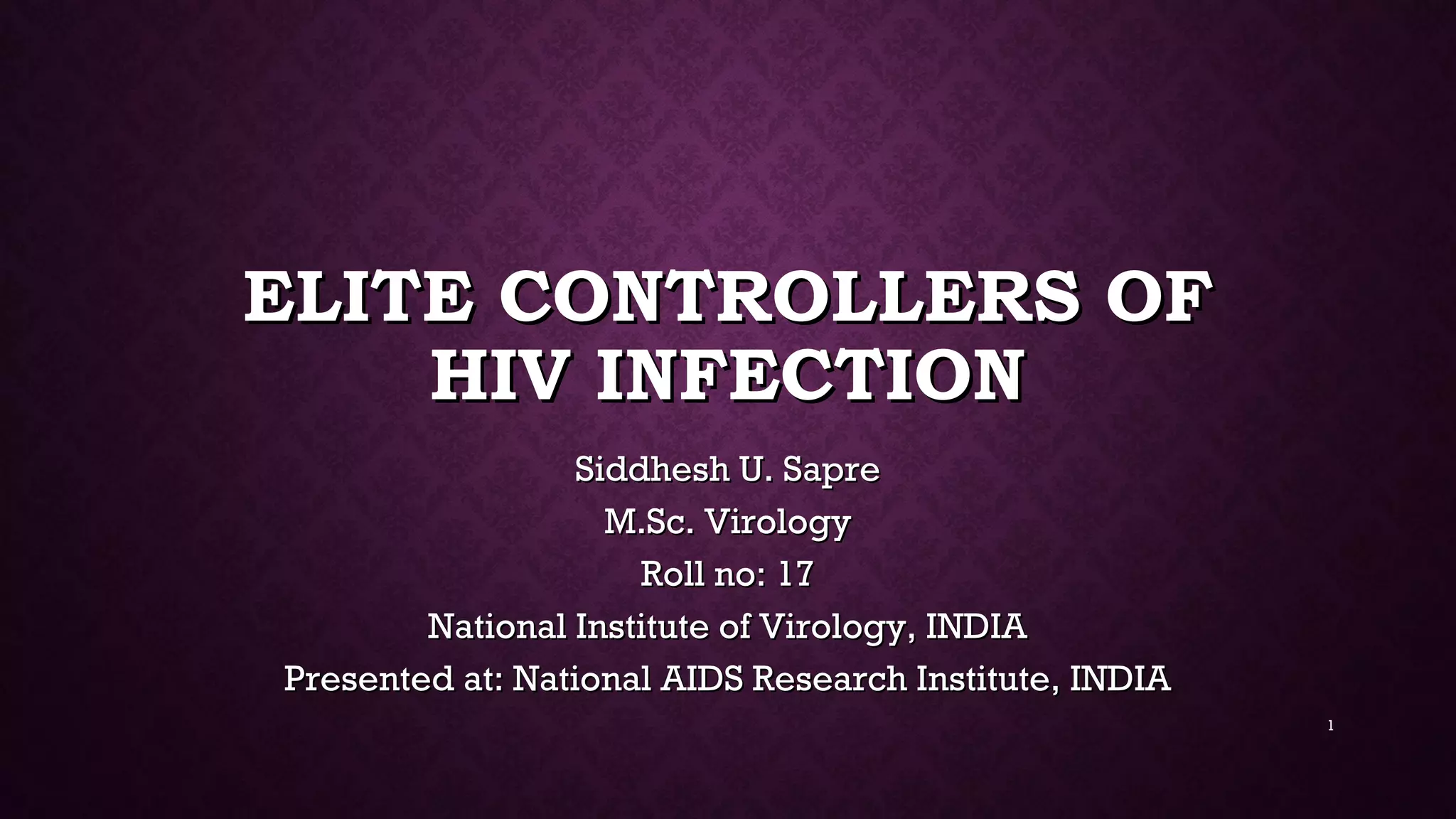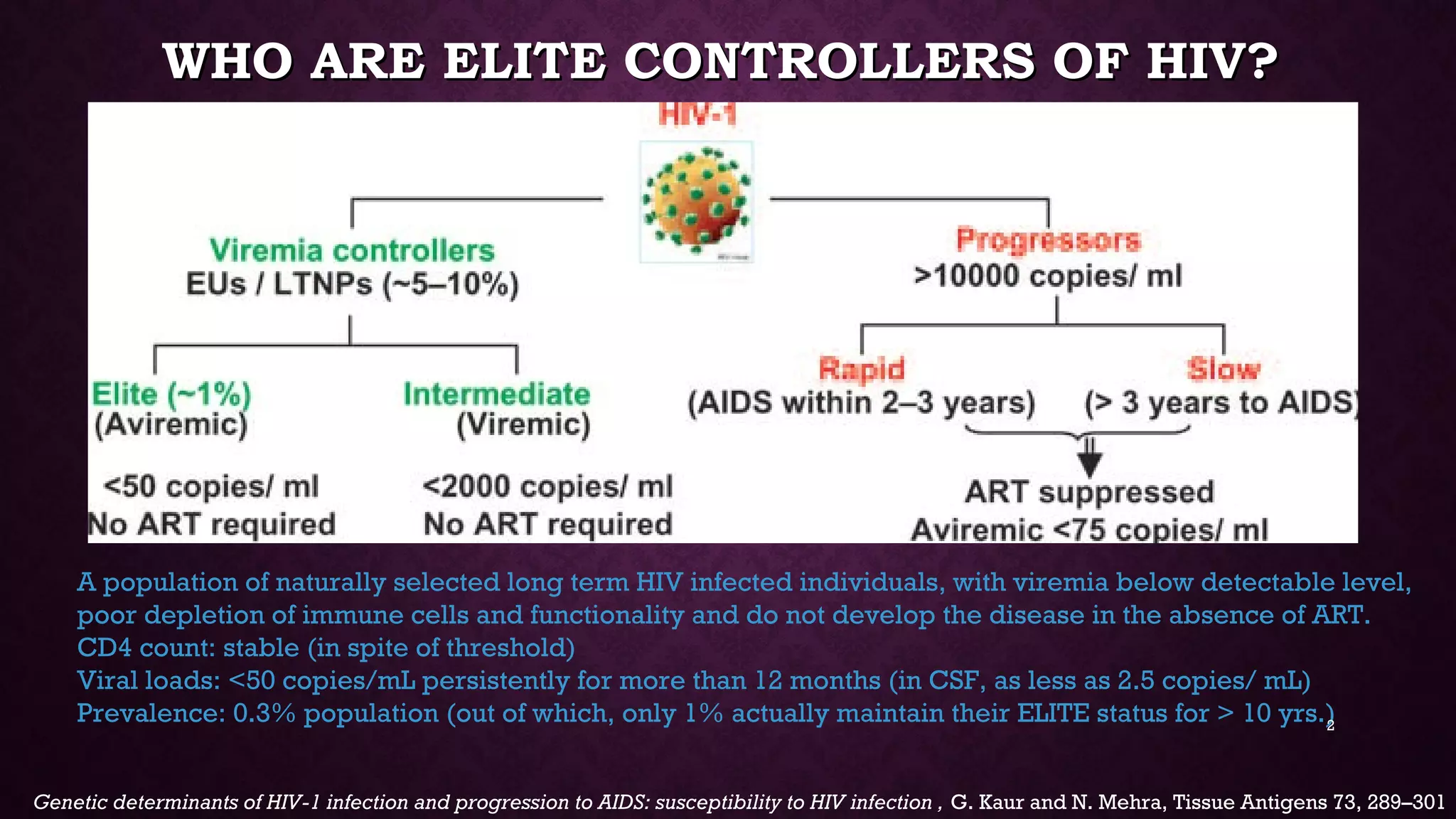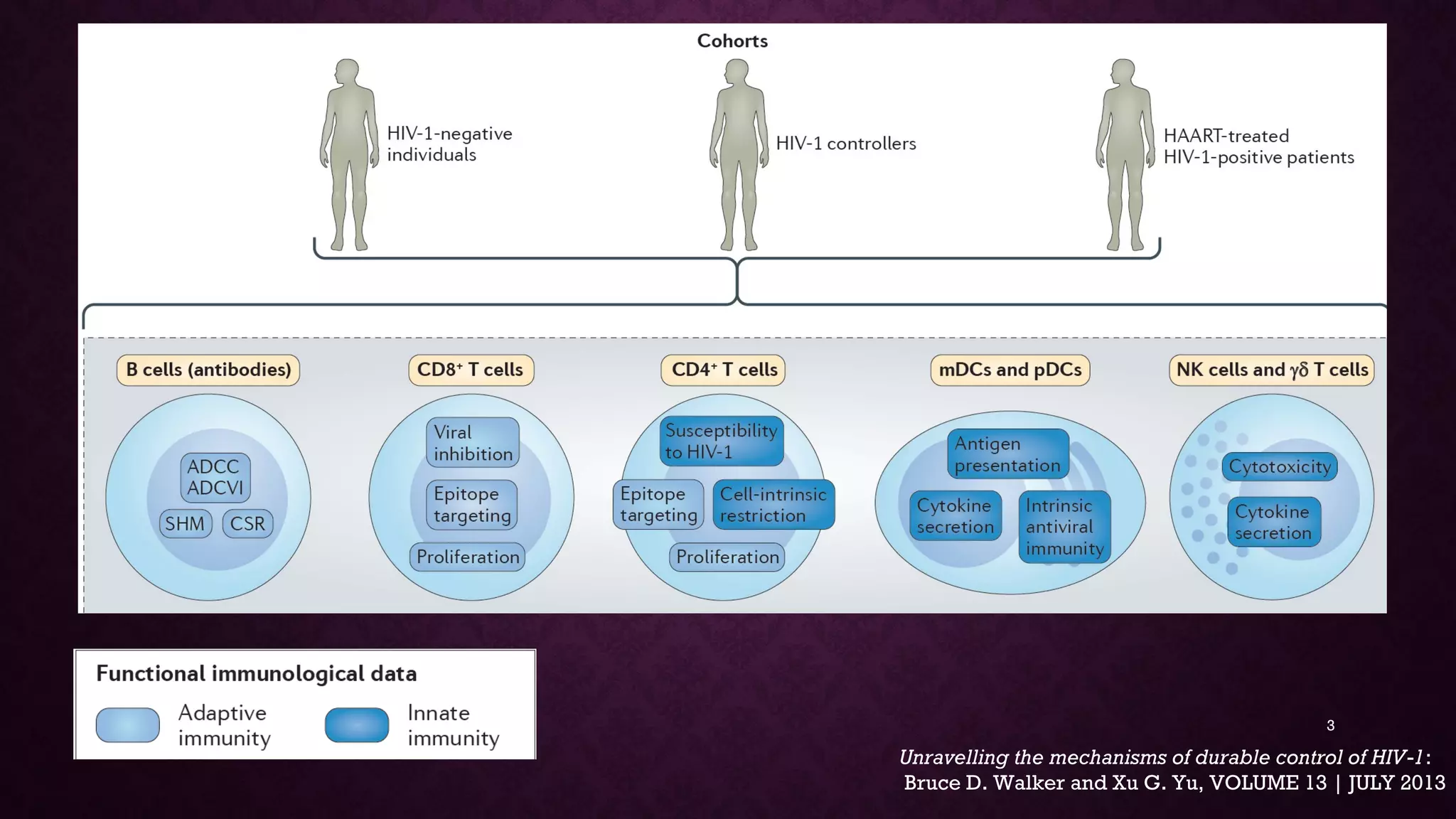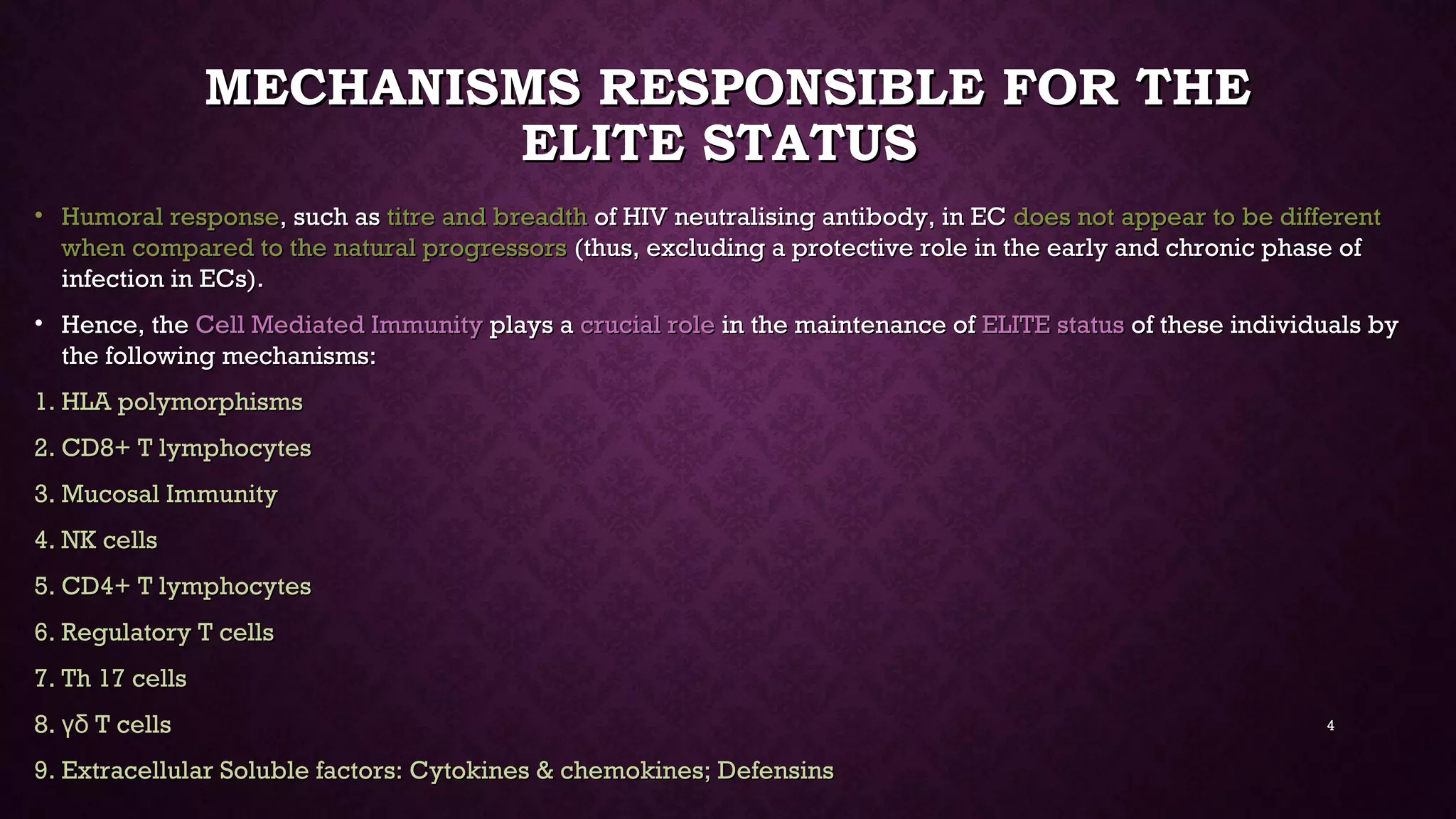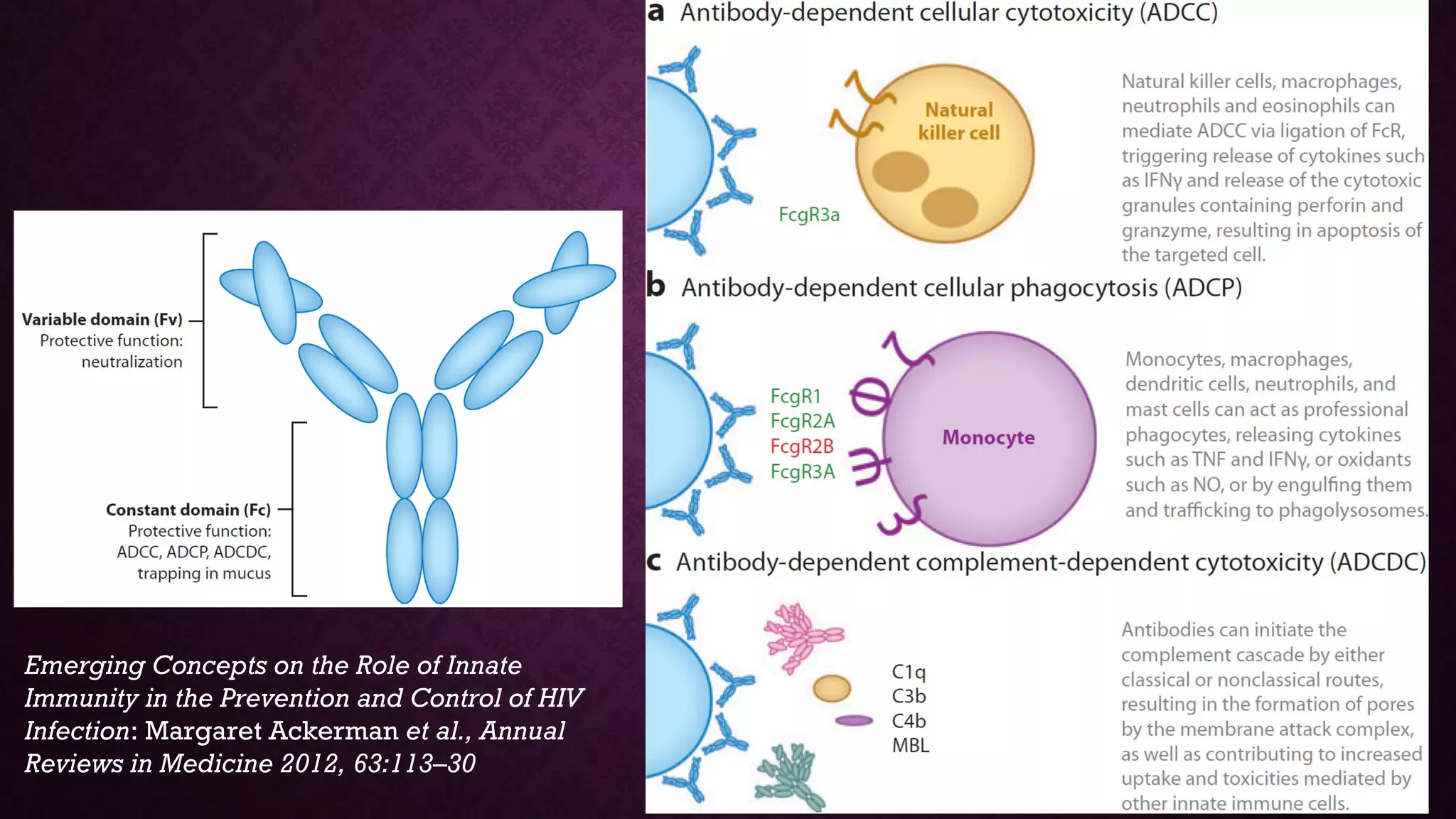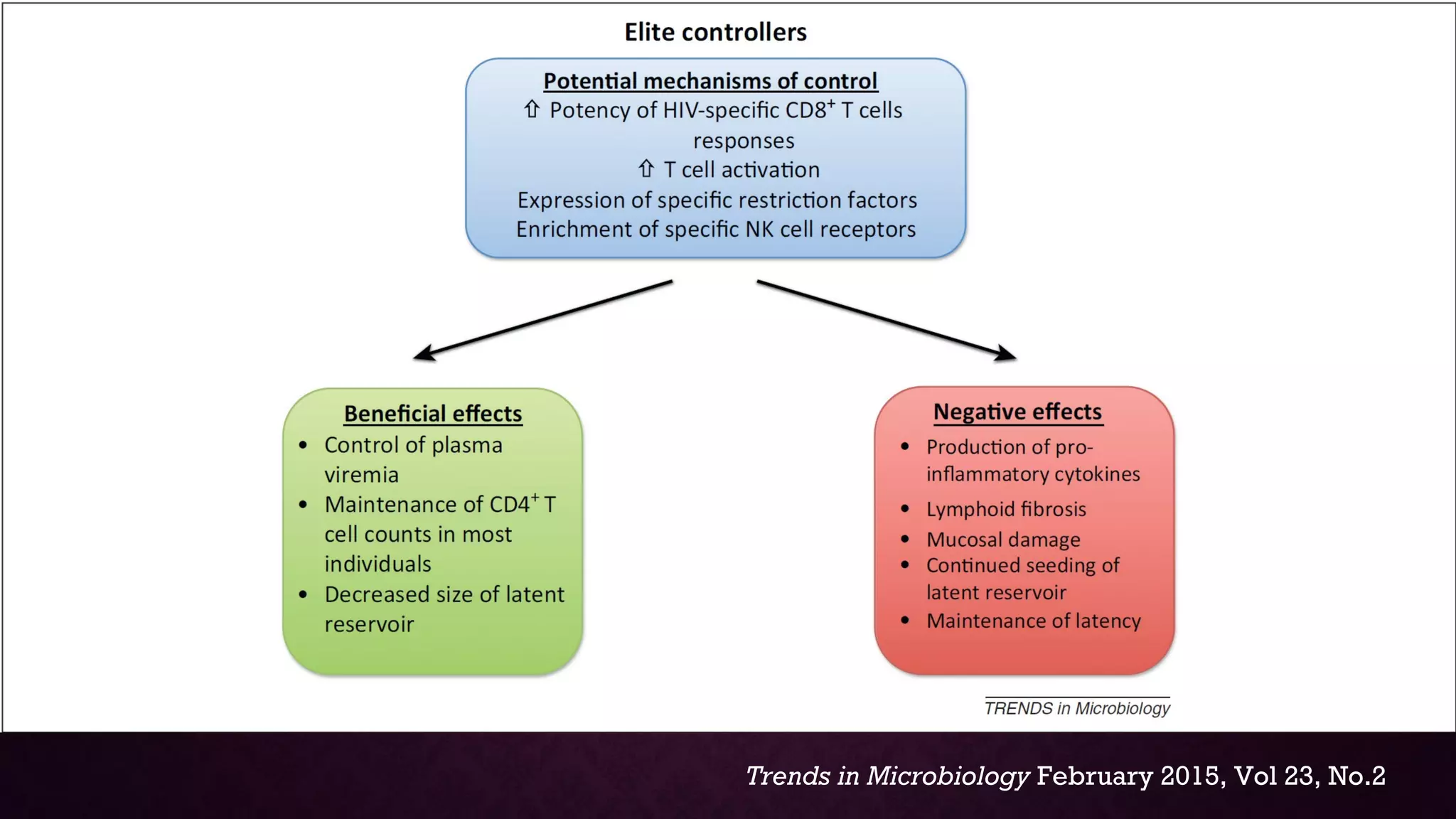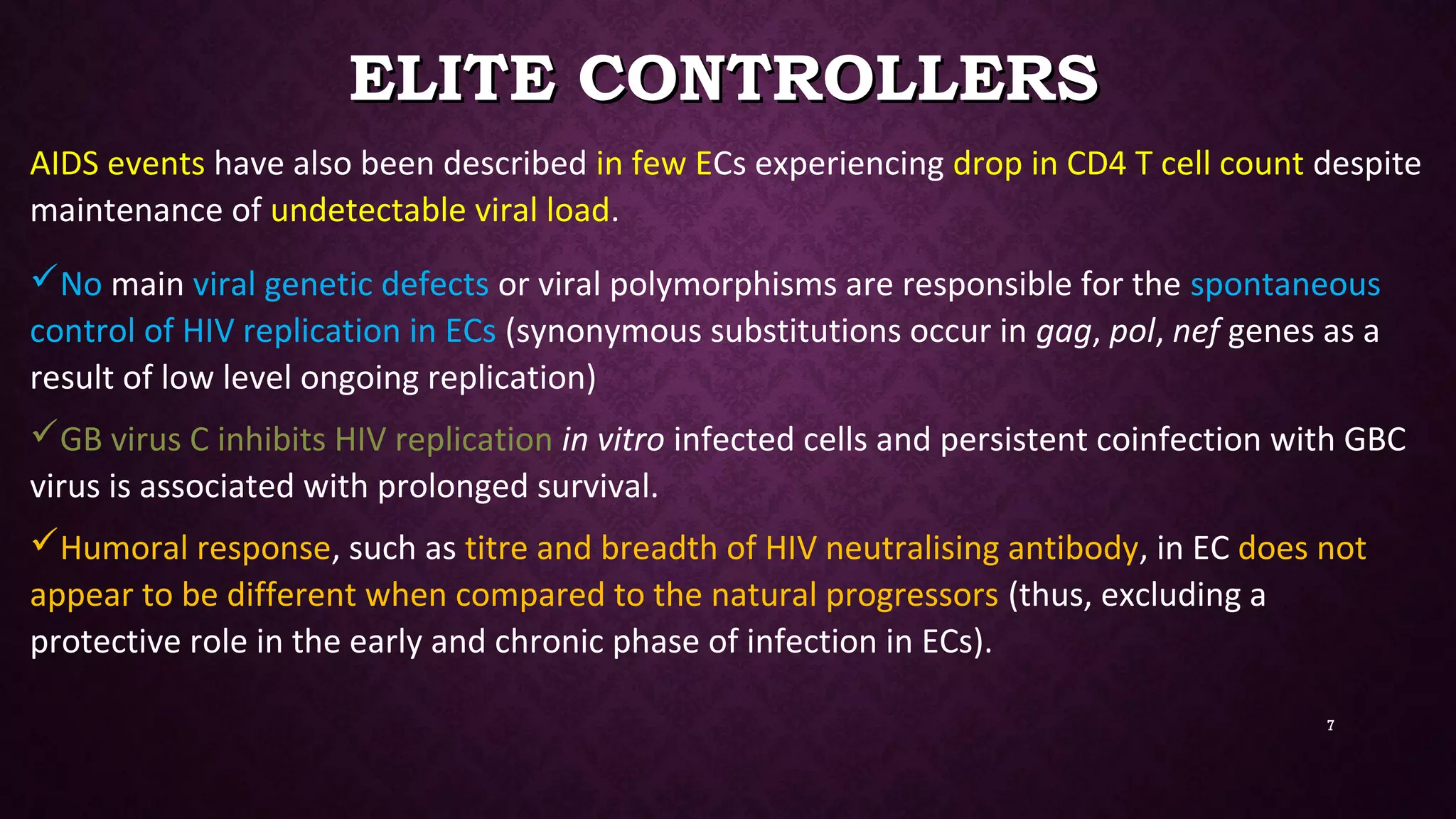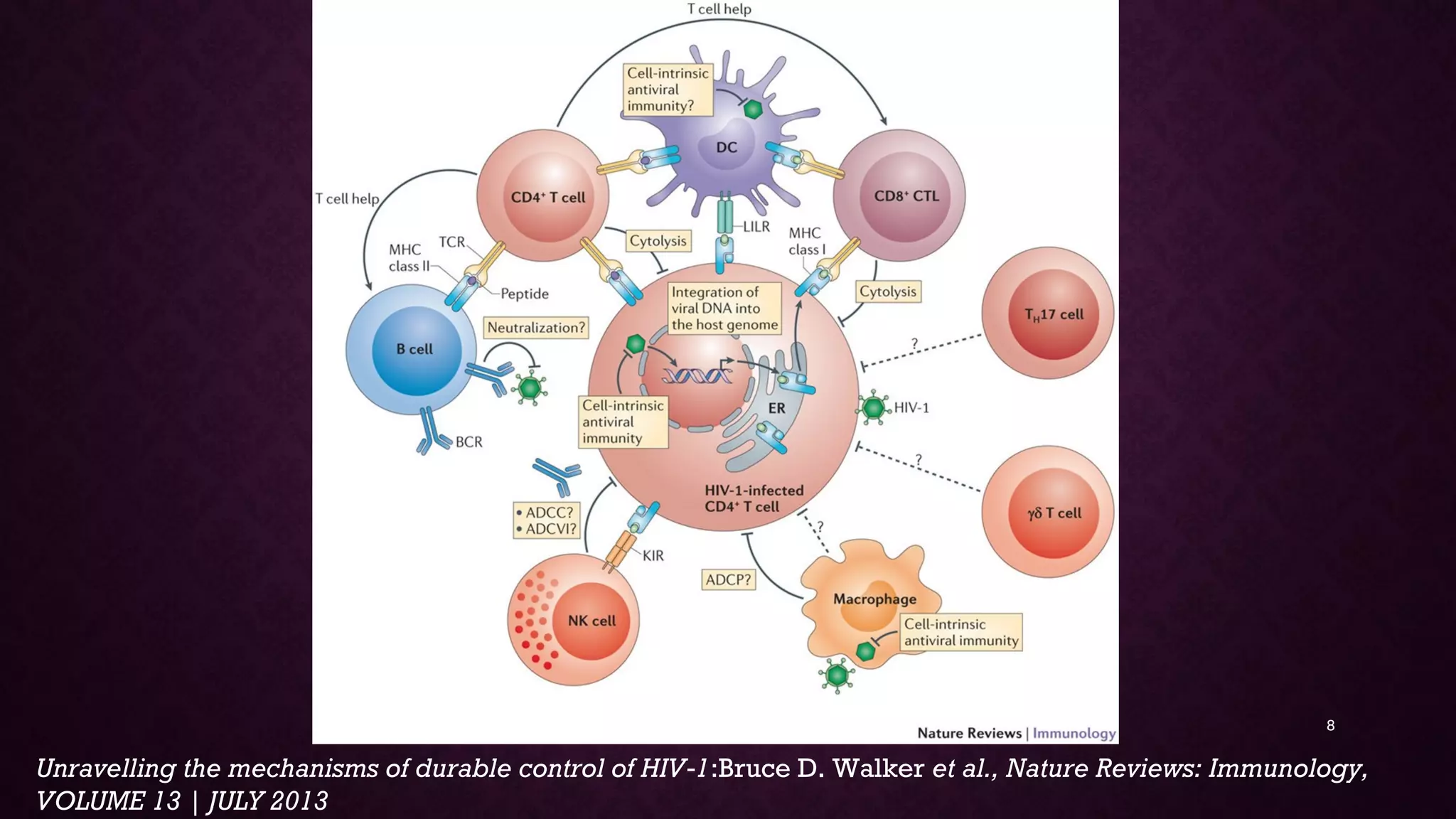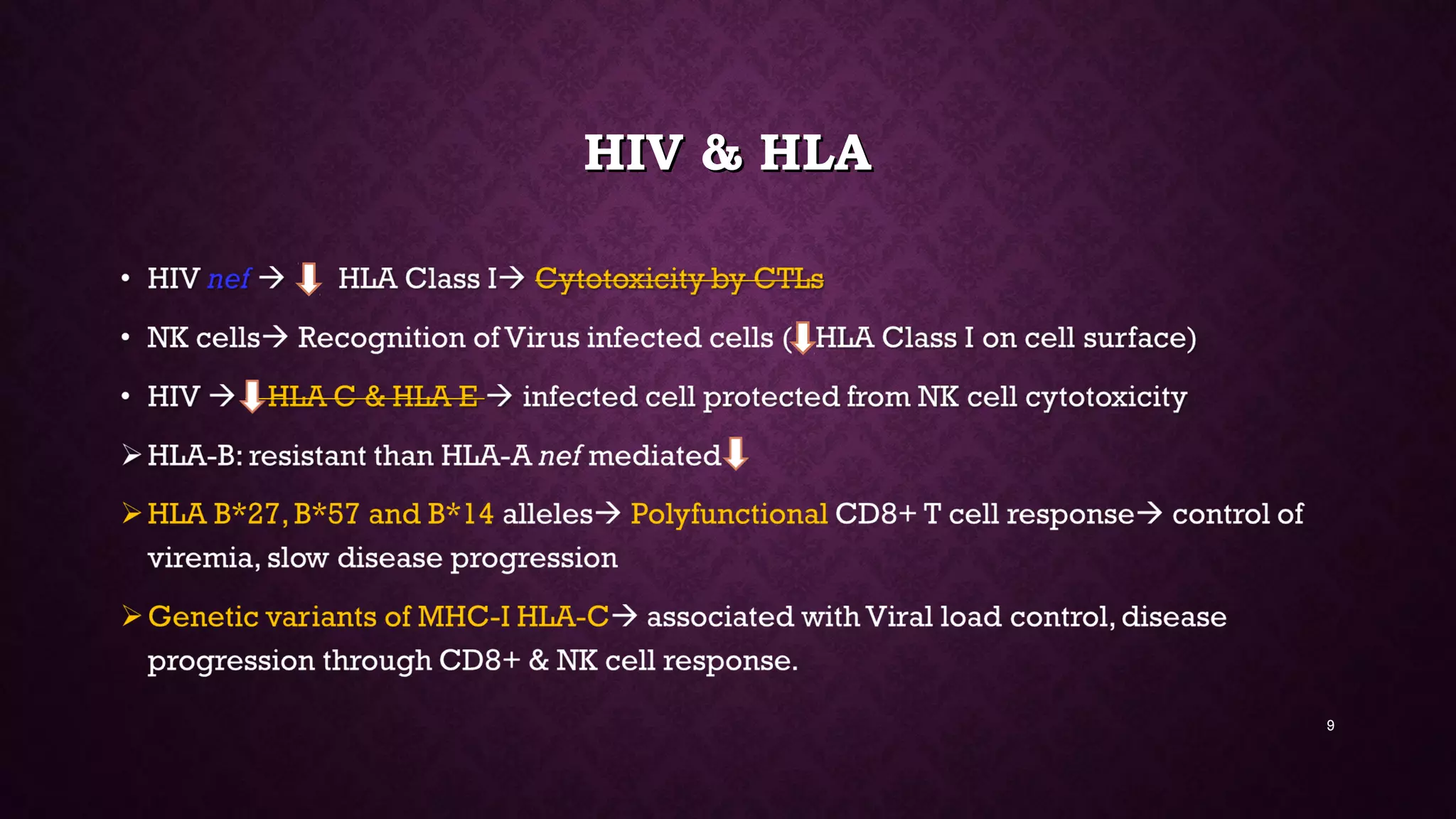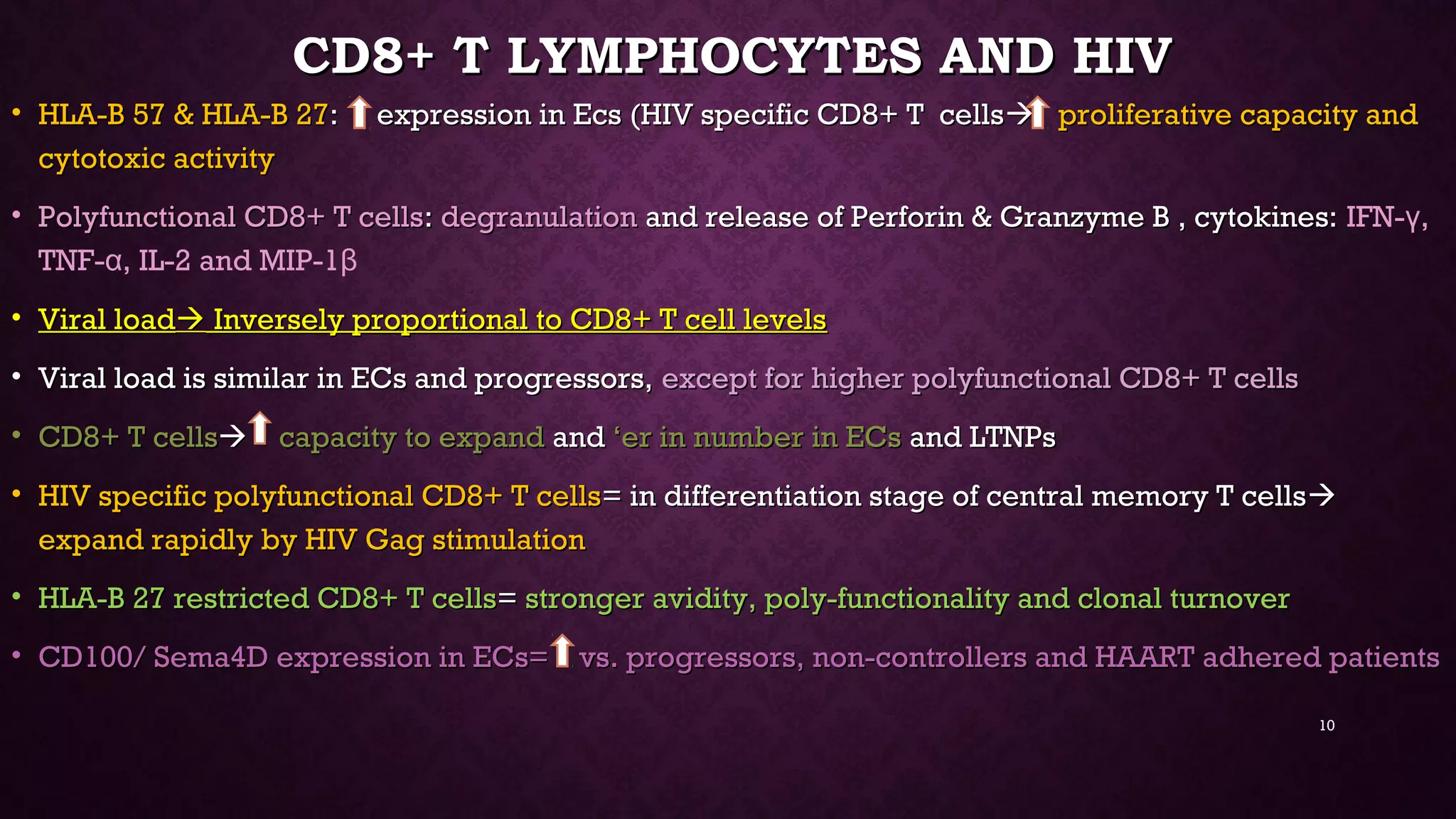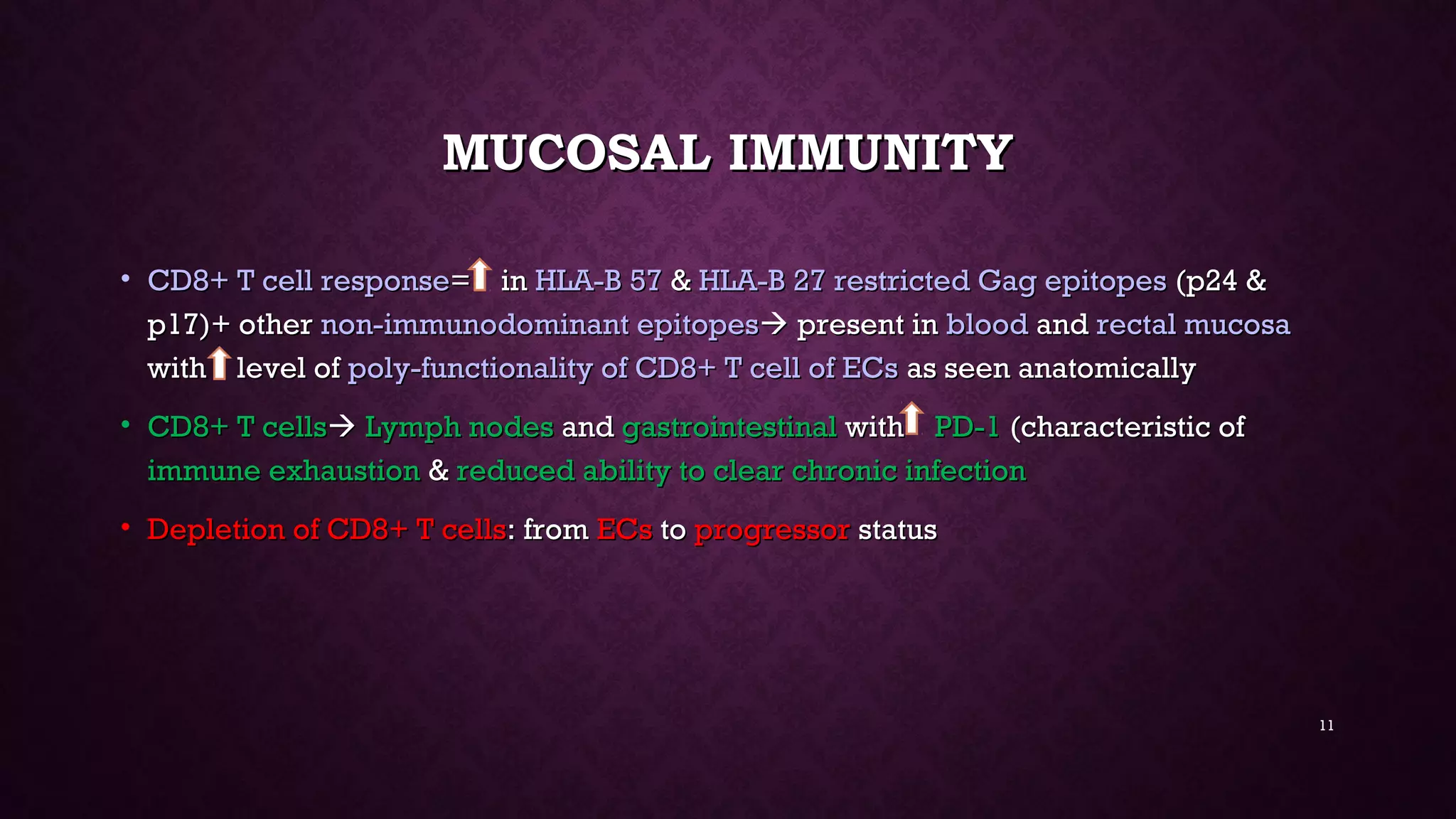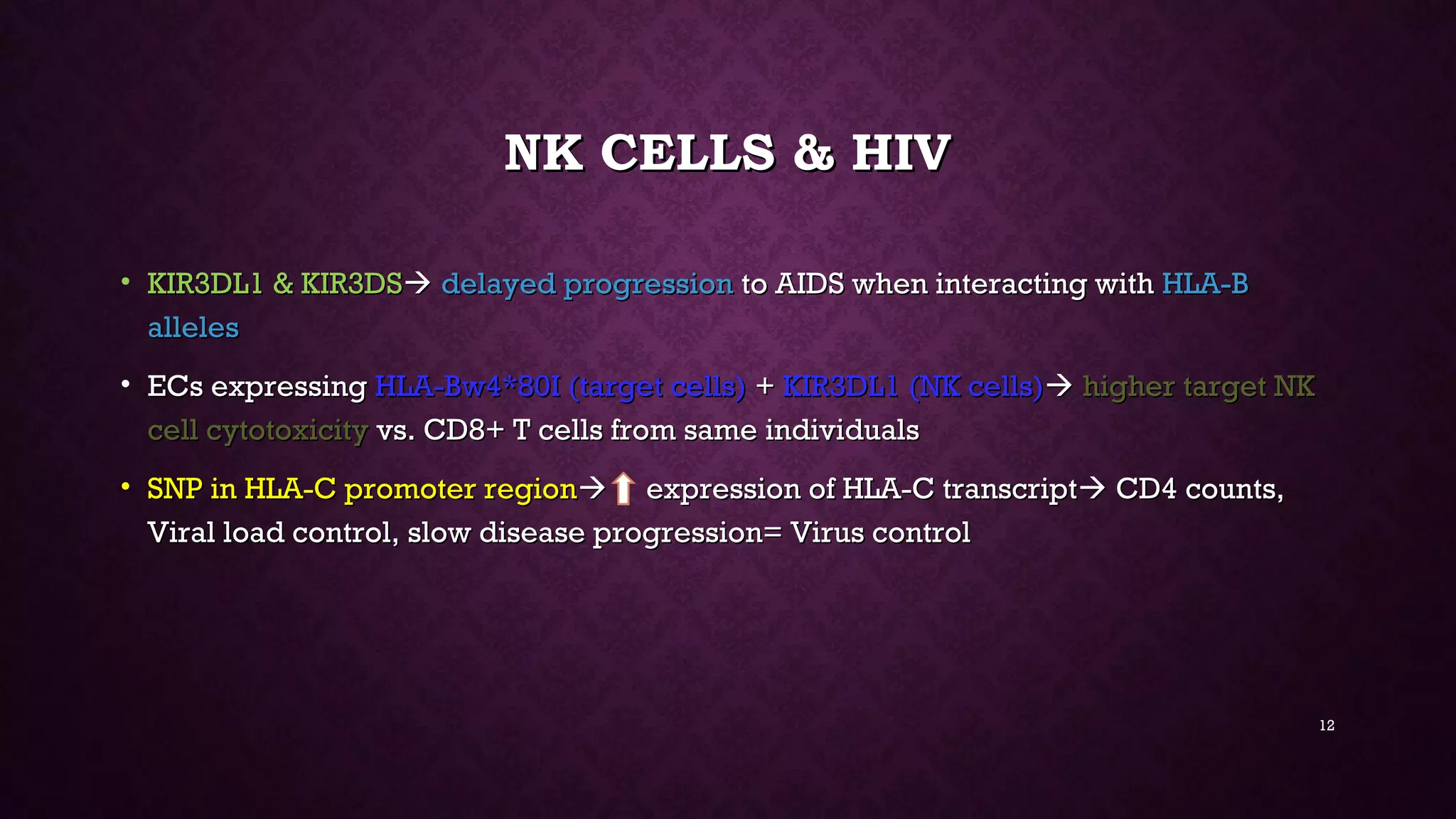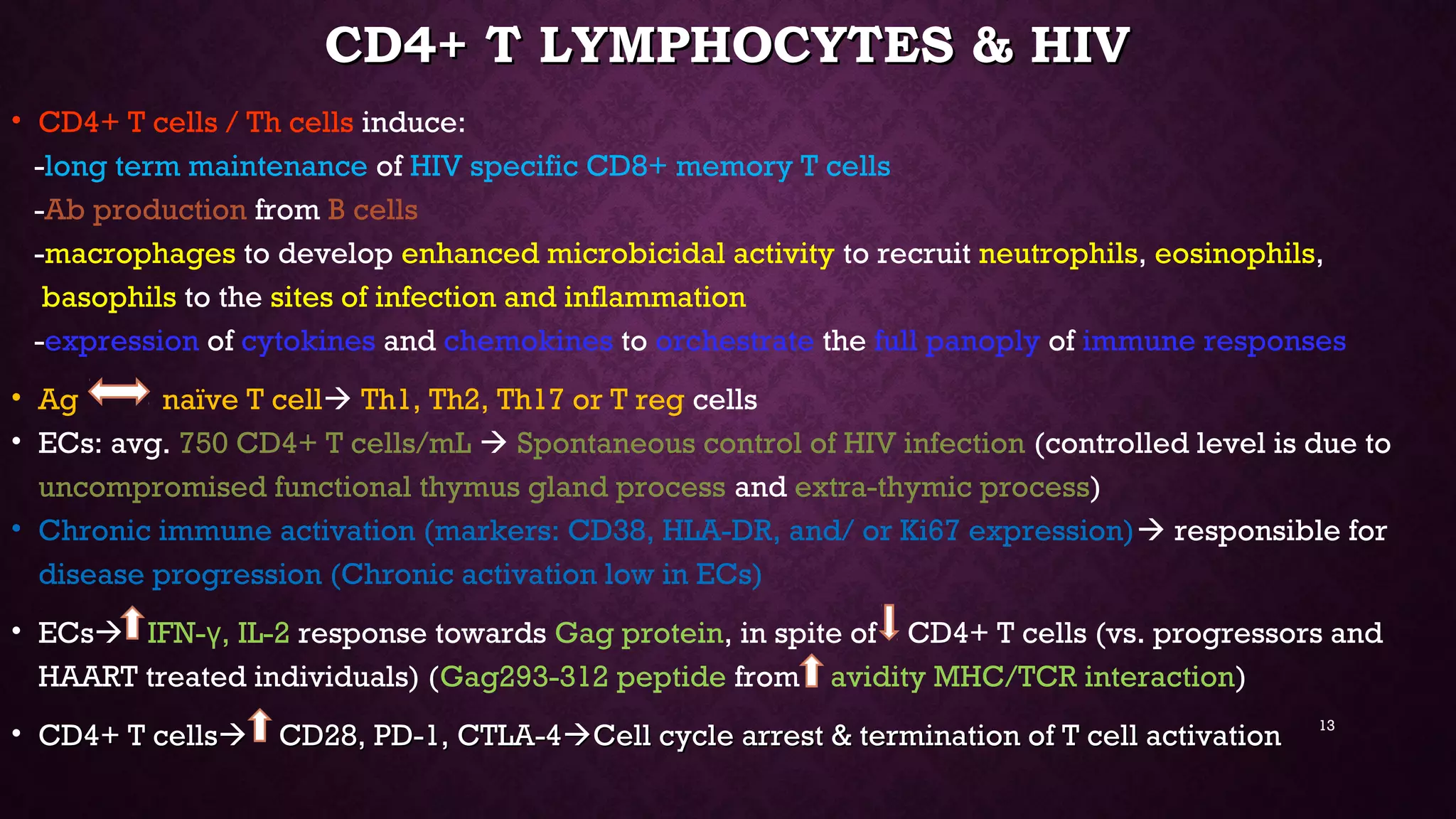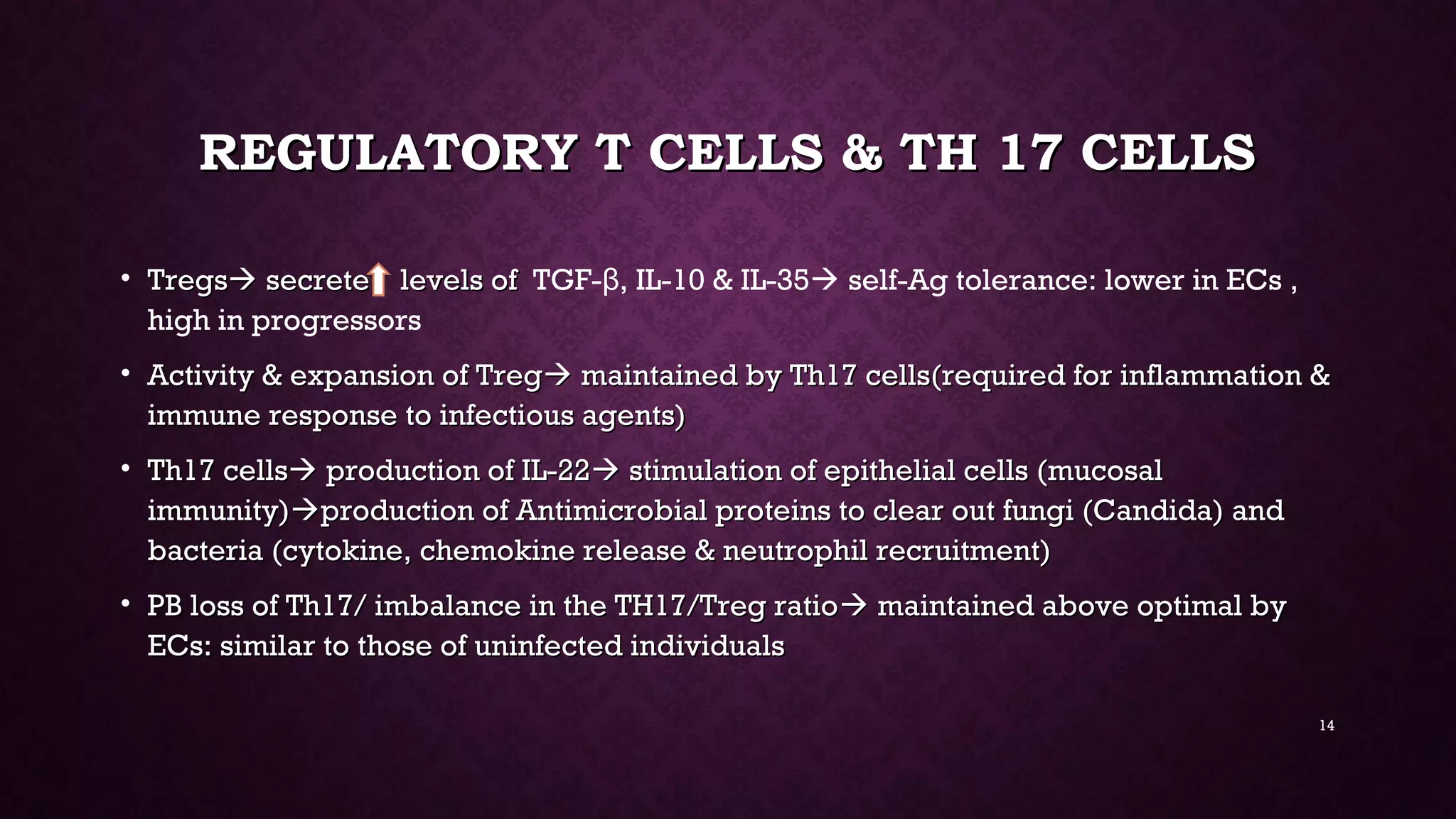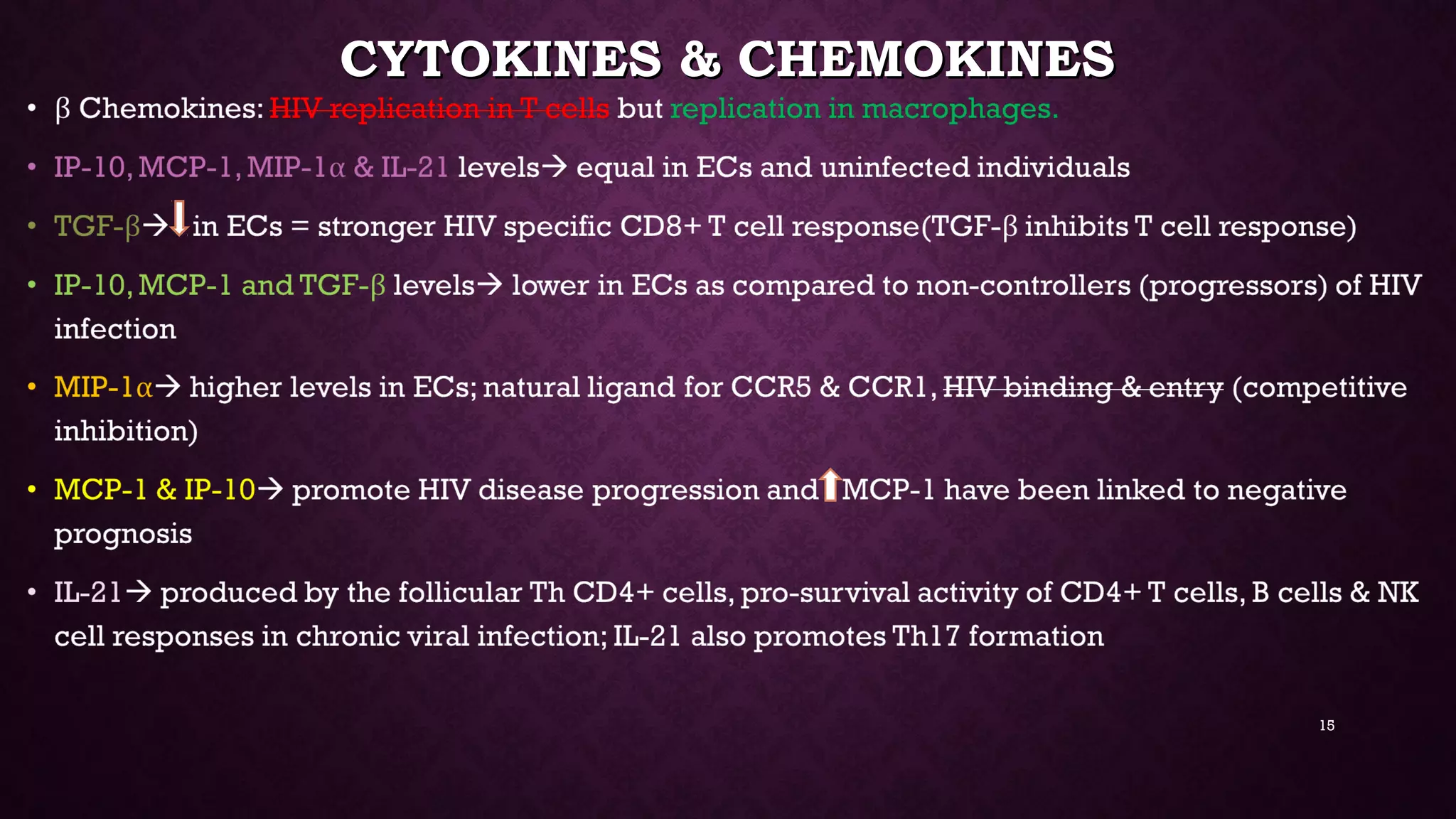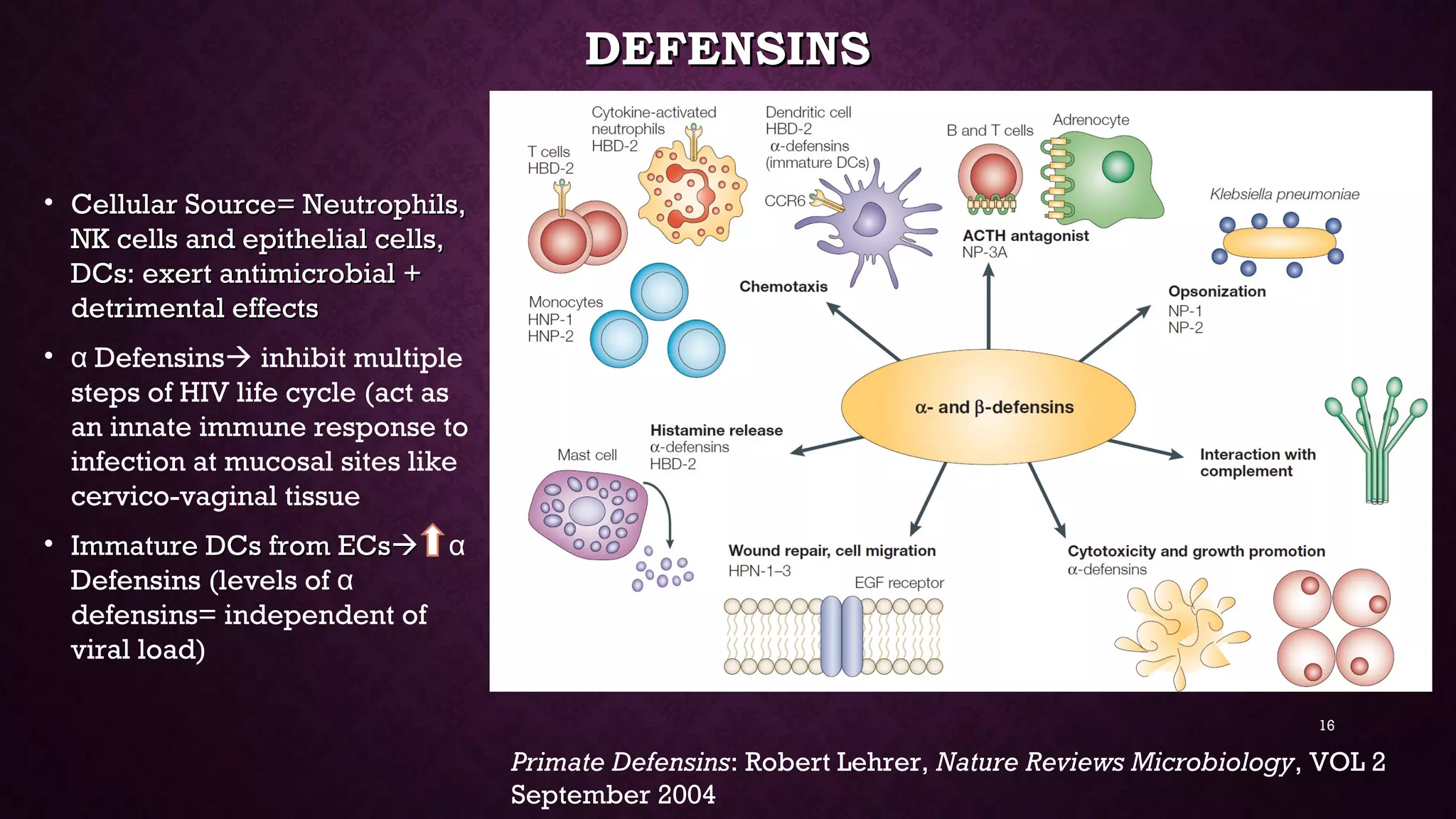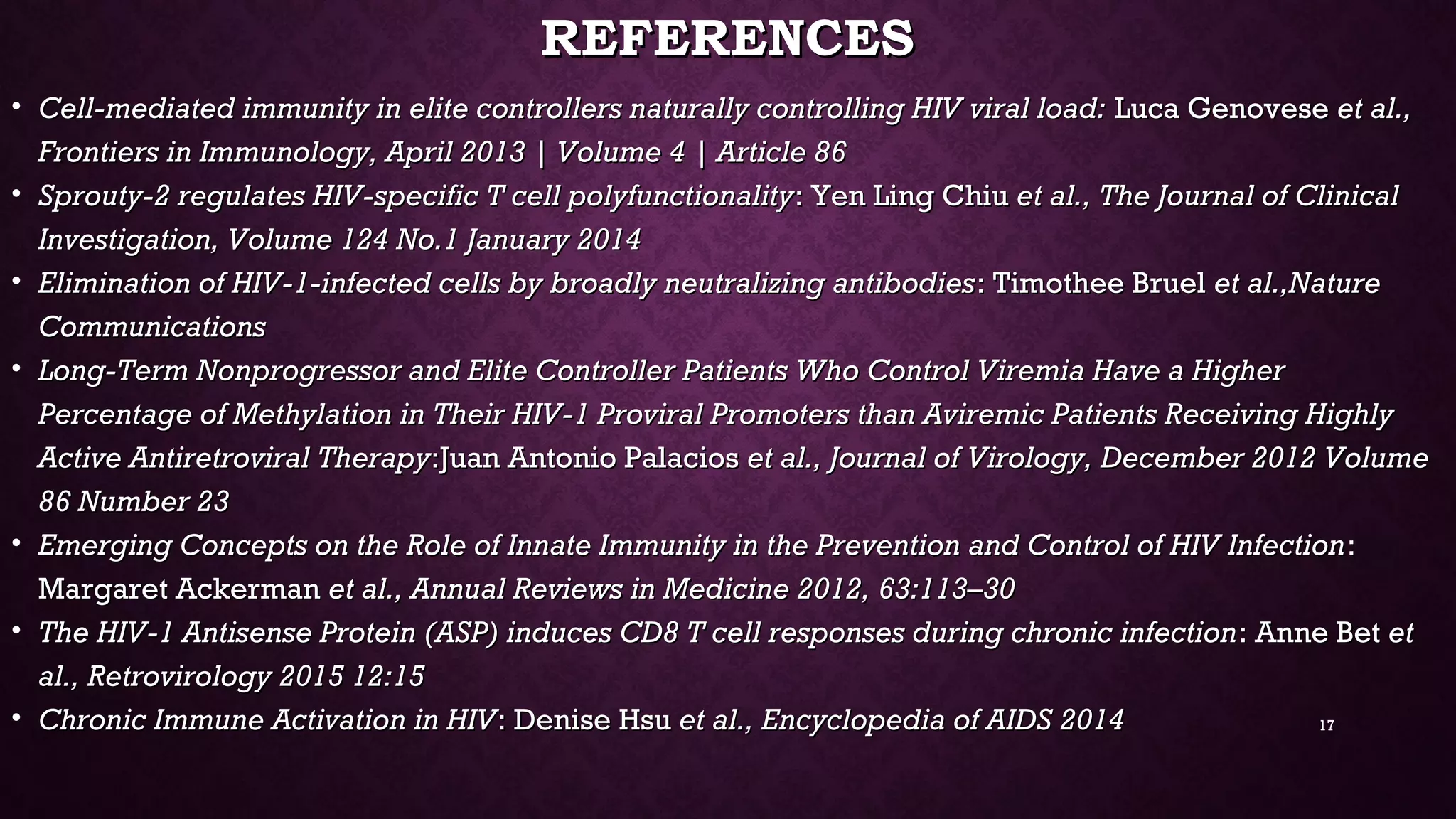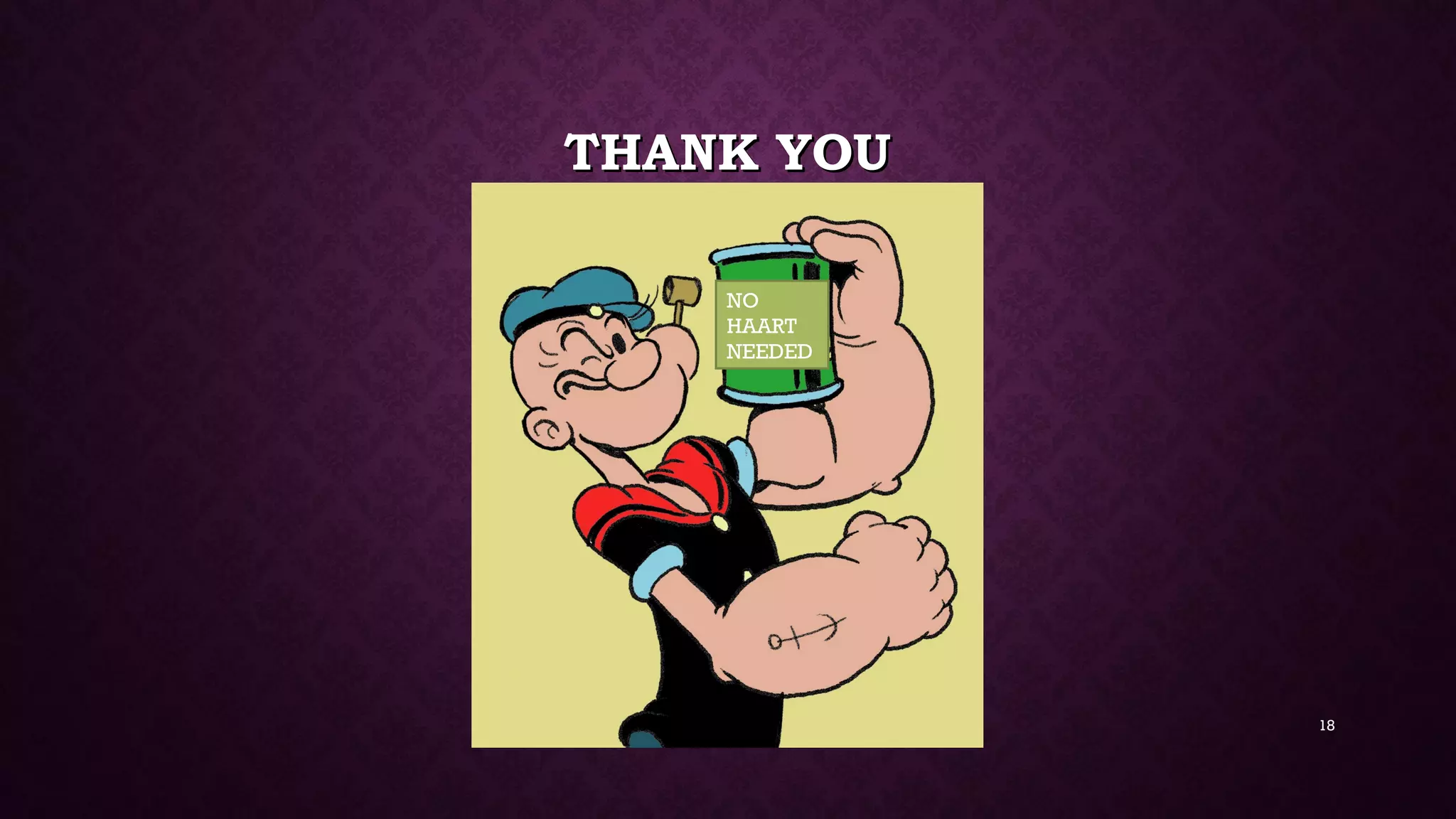Elite controllers of HIV infection are able to naturally control HIV through cell-mediated immunity without antiretroviral therapy. Key factors contributing to their elite status include certain HLA polymorphisms, highly functional HIV-specific CD8+ T cells, strong mucosal immunity, beneficial NK cell interactions with HLA alleles, and balanced regulatory T cell and Th17 cell responses that prevent immune activation. Their immune responses also feature polyfunctional CD8+ T cells, HIV-specific CD4+ T cell responses, and antimicrobial factors like defensins from dendritic cells that inhibit HIV at multiple stages of its life cycle.
